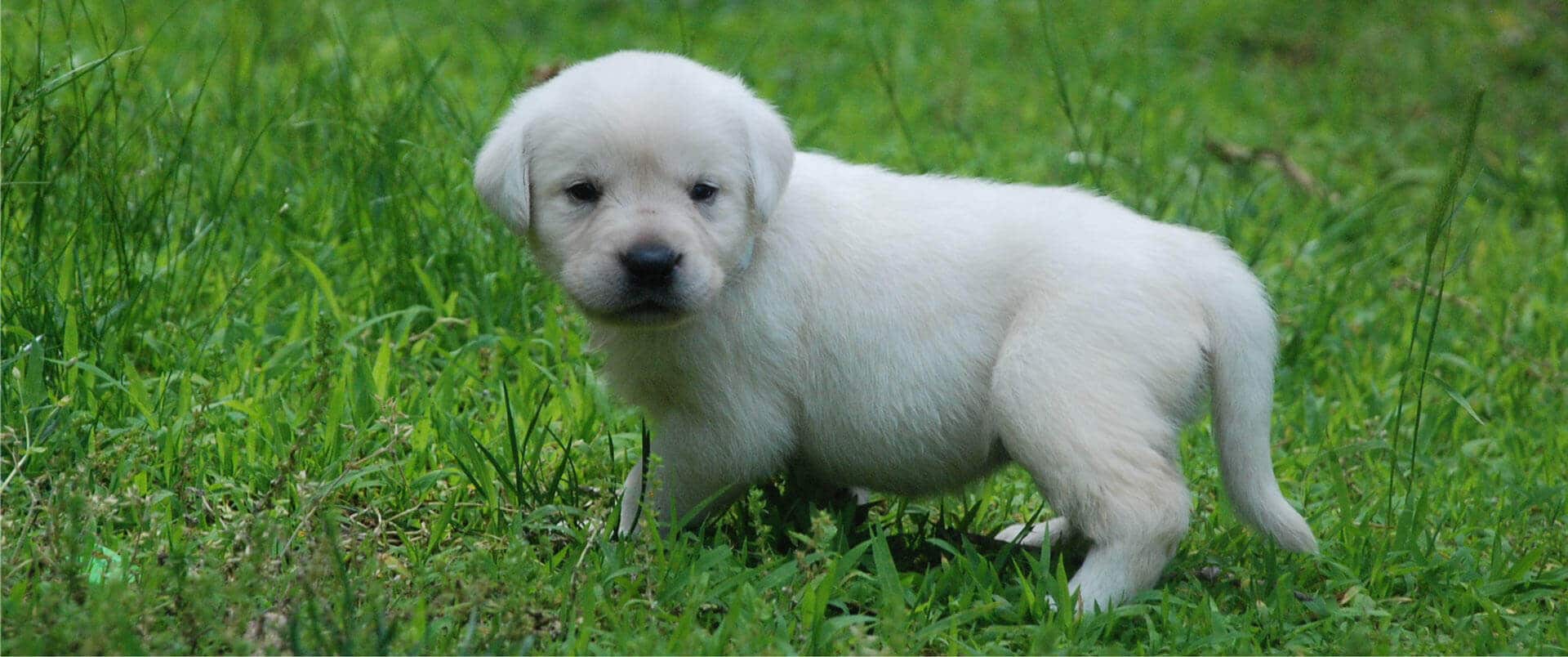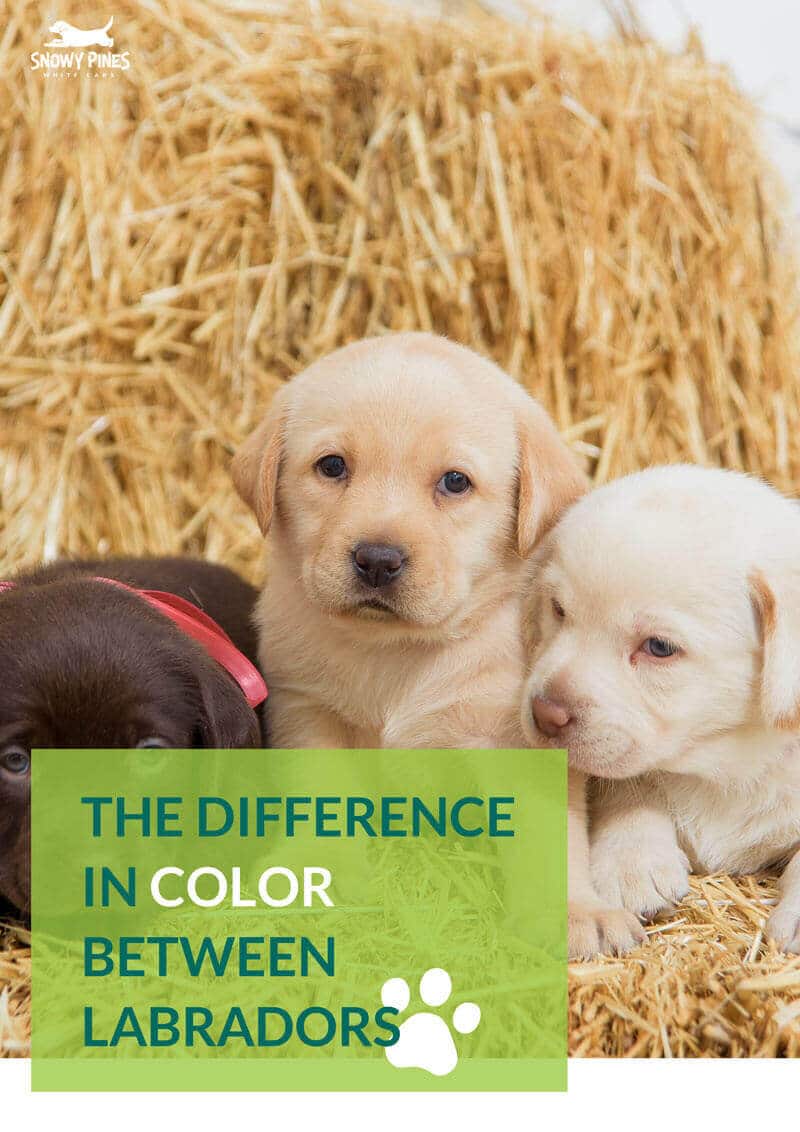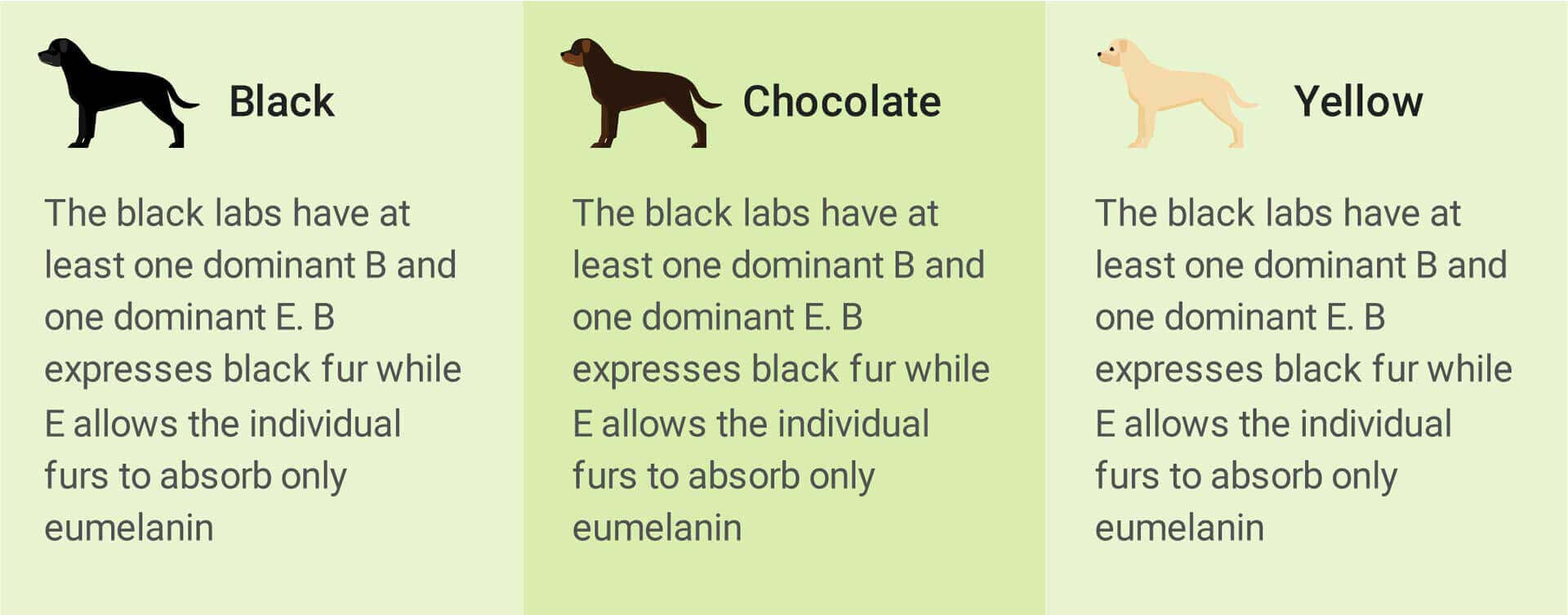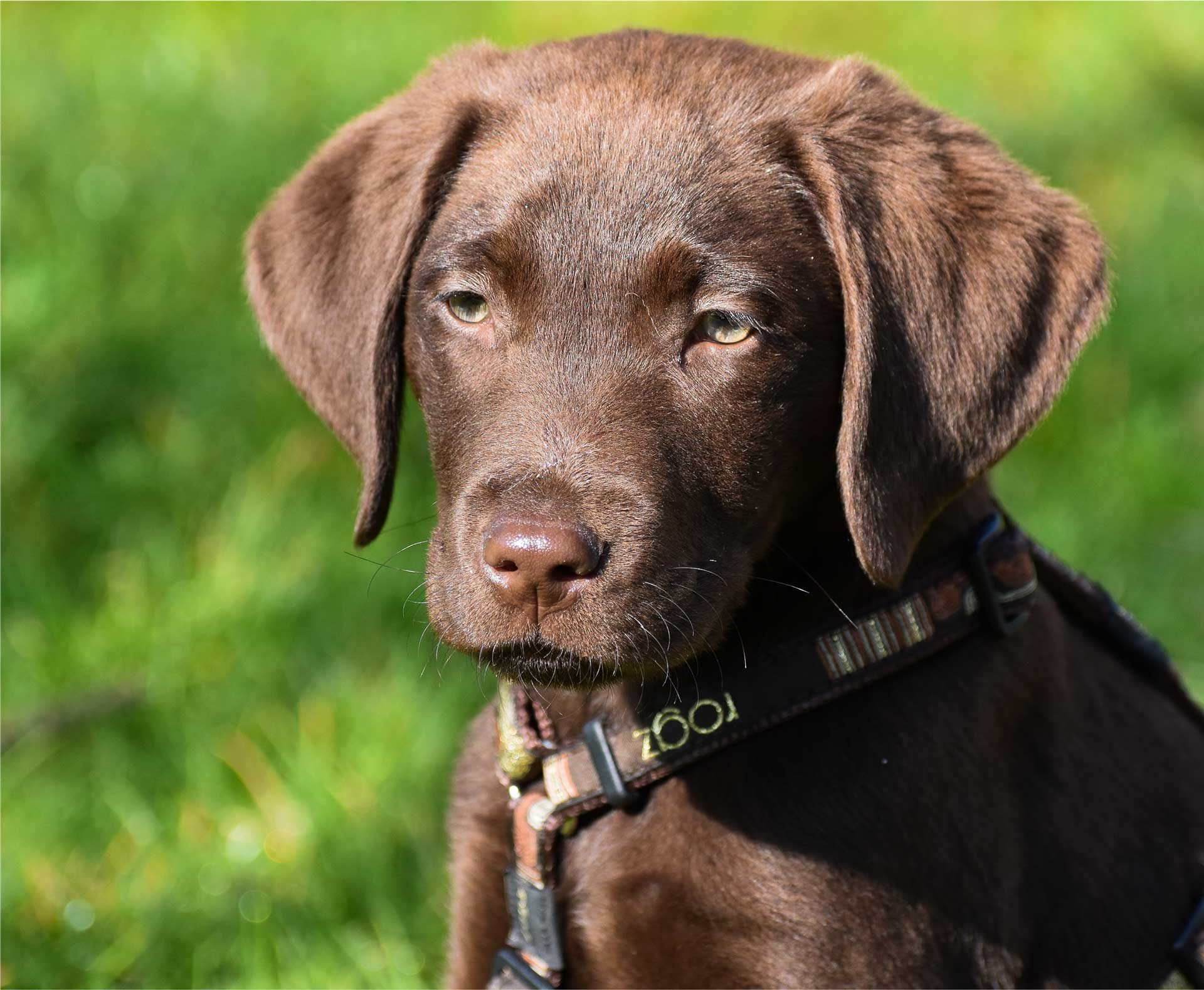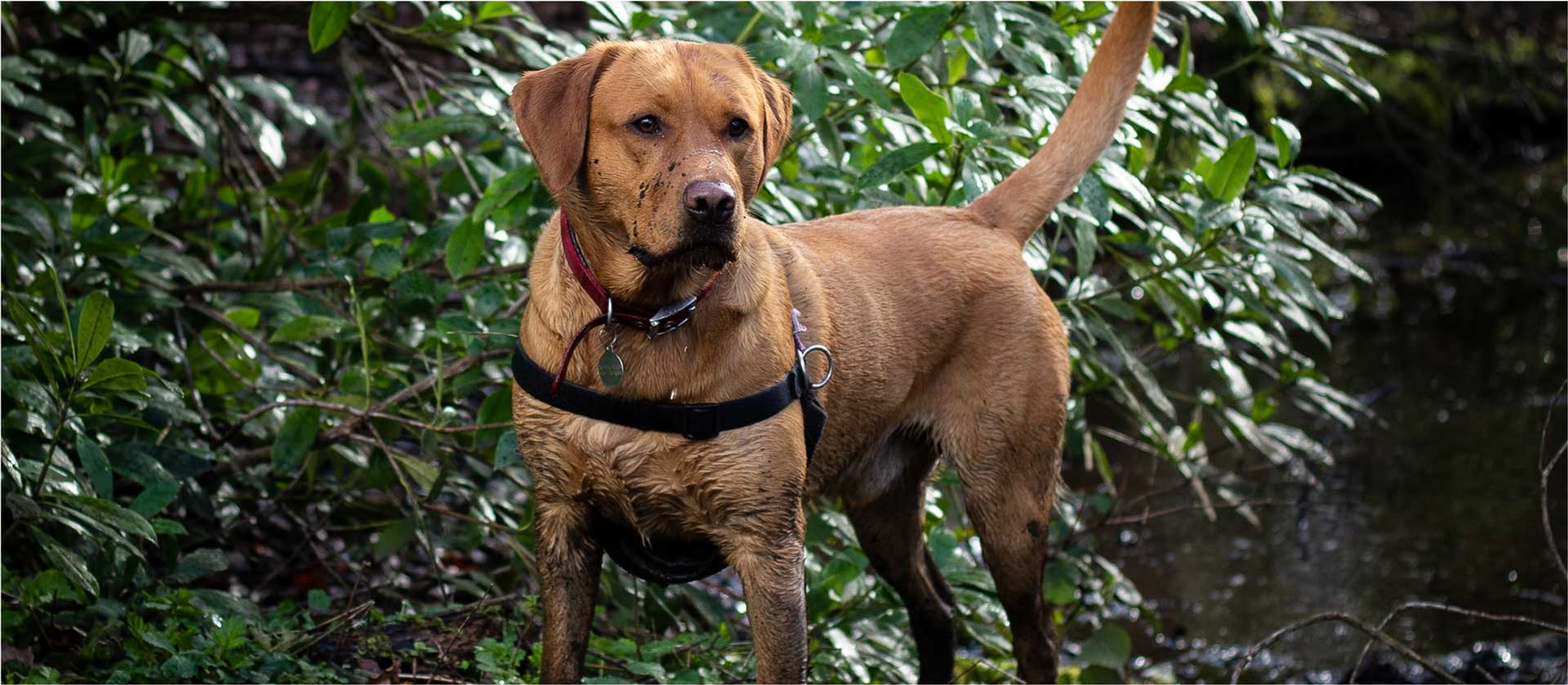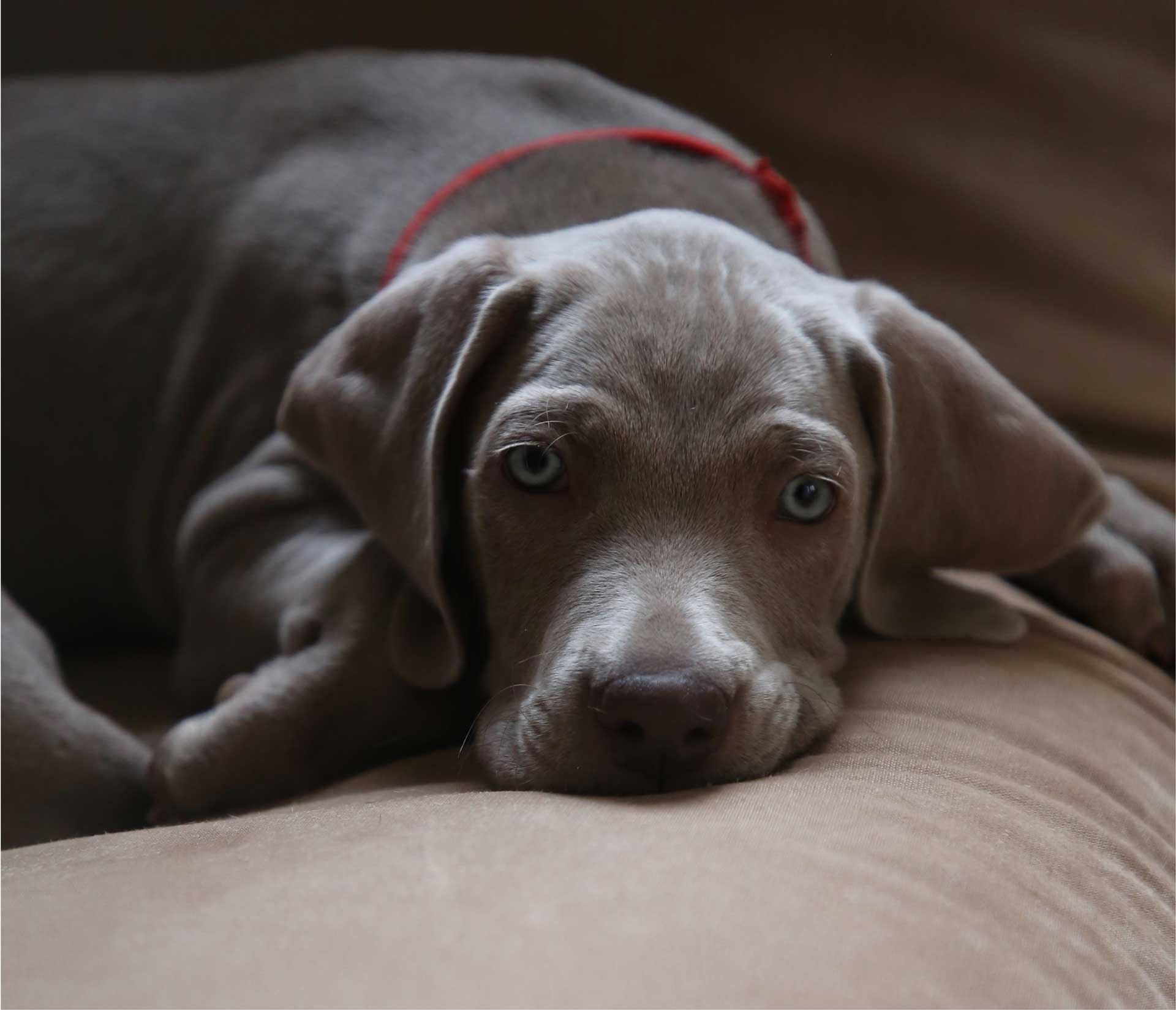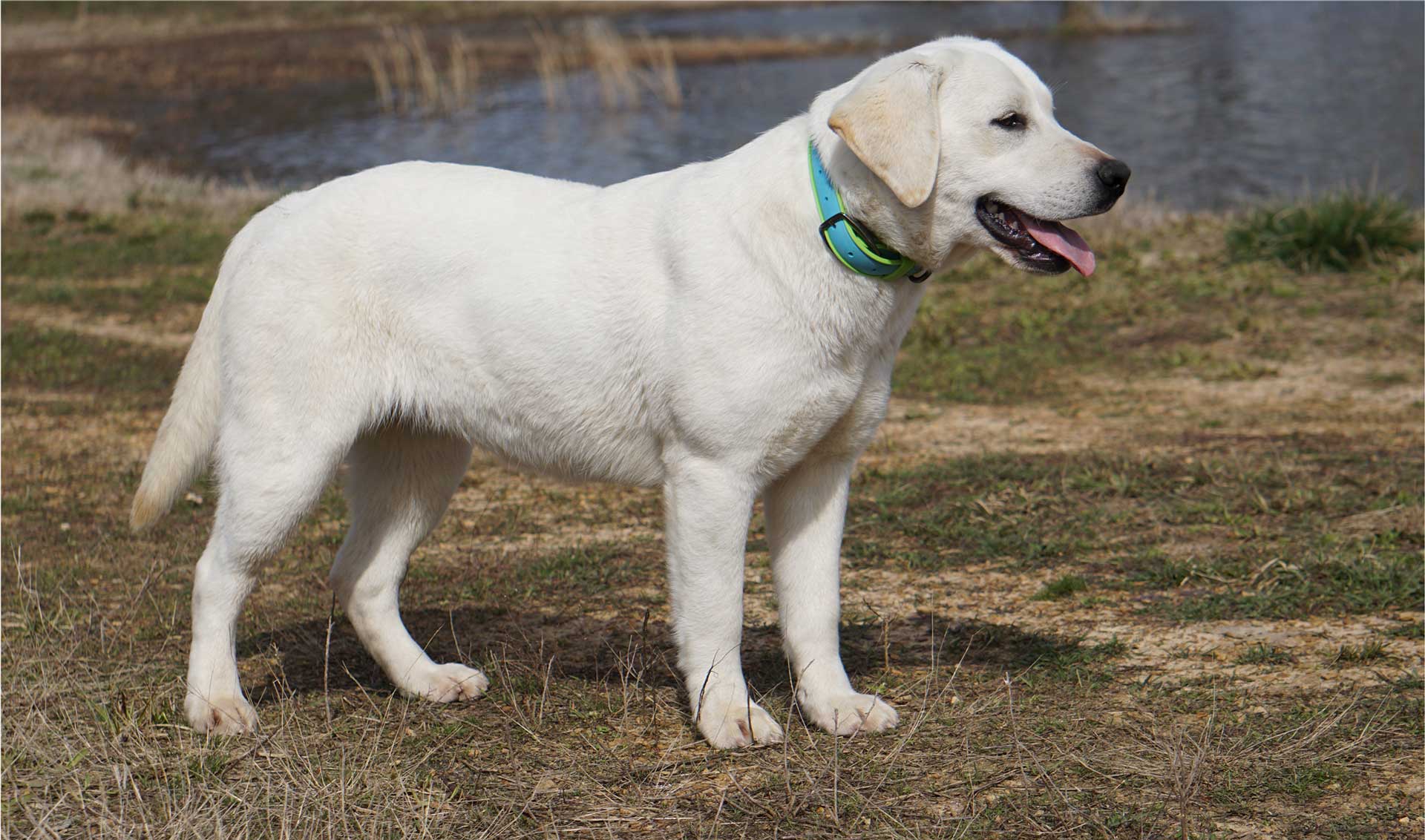American Versus English Labs
If all Labradors display the same kind of personalities and behavioral tendencies, why are there differences between American and English Labradors? The two breeds still fall under types of Labradors, but they were historically bred for different purposes.
This specialized breeding contributes to some of the differences between an American and English Lab, across traits like energy levels, temperament, personality, and physical appearance. They might be subtle to the untrained eye, but line them up side-by-side and you won’t be able to deny their specific differences.
Breed standards
The AKC single breed standard features only the Labrador Retriever. The body doesn’t necessarily differentiate between American and English sub-types. However, the reason behind breed specializations for American versus English Labs is that the former is bred for field trials and hunting, while the latter does well at shows.
According to the AKC, American Labradors can be between 21.5 inches and 24.5 inches in height. This makes sense, because you would want a hunting and field dog to be lithe and tall. By contrast, the standard height for English Labradors run between 21.5 and 22.5 inches.
Physical appearance
In general, Labs have a thick, tapering, “otter-like” tail, which is perfect for their adventures in water. They have wide heads and are easygoing. You may distinguish the following physical variations in English and American Labradors:
- While the English Lab is stockier, wider-set, and built with a barrel chest, the American Labrador is leaner, with a more athletic build.
- American Labs have a narrower muzzle when compared to English Labs.
- English Labs have thicker necks, thicker coats, and shorter legs. They also have a shorter body, with a wider face, so the overall appearance of English Labrador is more “solid.”
Energy levels and temperament
You’ll also notice a difference in the energy levels and temperaments of American versus English Labradors. For example, we always let our incoming families know that Snowy Pines white English Labs are more docile, gentle, and friendly.
Because of their naturally well-balanced behaviors, English labs are well-suited for families.
Calm, sweet, and good-natured as any Lab would be, the English Lab is more prone to lie around and sit by your feet. So he’ll need you to take the initiative come exercise-time!
In contrast, American Labradors have a more hyperactive, on-the-go sort of personality. They’re highly excitable because they’re bred for work and field trials. This also means that they’re constantly on high alert for signs of other creatures around the area. Want to read more about the difference in breeds? Visit our blog post on the Difference in American and English Labs
